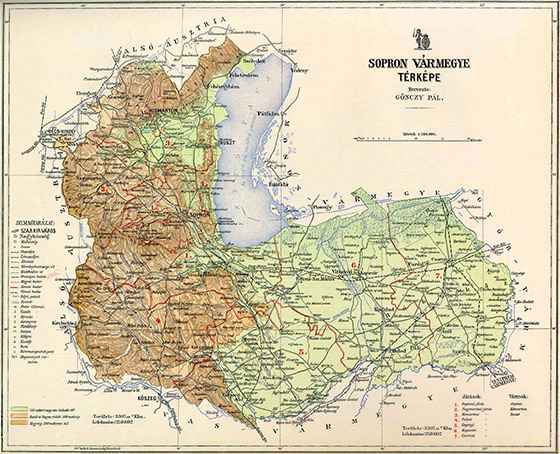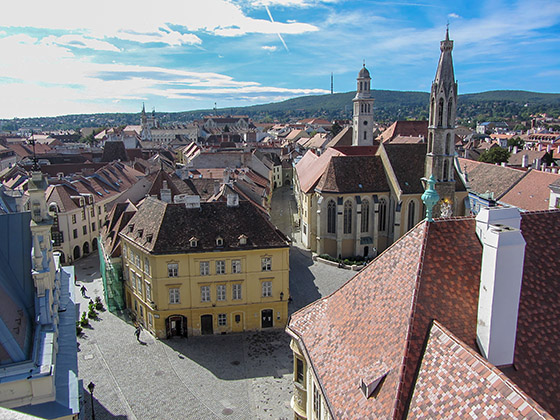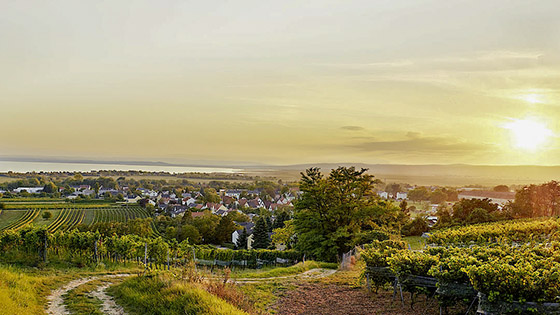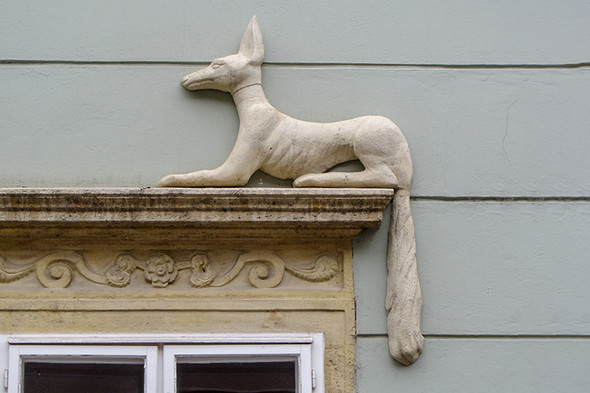You are new here? For the 1st part of this article click here. (Cover pic: Roman Hobler)
The most important Austrian black variety is Zweigelt, at least in terms of production area size. The best-known, however, is Blaufränkisch, which is Carnuntum and, of course, Burgenland’s main variety. And what’s the capital of the Burgenland. Sopron, of course! But although Civitas Fidelissima has been mentioned a hundred thousand times, we simply must point out here the fact that Sopron is rather Ödenburg, Burgenland’s capital, in spirit, rather than a small Hungarian town in the middle of nowhere near the border.
My mother was raised for this life, so to say, (…) And then my father was also raised for this life. Just the two of them for each other, displacement did not feature among their possible conceivable lives.
Quoting Péter Esterházy in connection with Sopron also makes sense in several respects. One is that the area, both its Hungarian and Austria parts, is brim full of Esterházy castles, relics and stories, but what is really interesting is that although the above sentences refer to the aristocracy, they could be perfectly interpreted for any ethnic group in the 20th century. On the other hand, the winery bearing the historic name of Esterhazy produces lovely Blaufränkisch both in Austria and at its sister property, Etyeki Kúria, in Hungary.

Sopron County map (Hungary) before WW1
Proud bean producers
Central Europe has never had to go over to its neighbours to discover foolishness. For example, in 1594, in Sopron (i.e. in Ödenburg), the city council excluded the Hungarian language from the city administration. This was understandable as there weren’t too many Hungarians there, but the decree also banned them from buying a house, so that (but obviously not for this reason) the German farmers could live and thrive as they should. Speaking of farmers, does everyone know what we mean when talk about ‘ponzichters’? The original German word alludes to the fact that the Ödenburg grape growers planted vegetables, mainly beans, between their rows of vines (Bohnenzüchter – bean producer). There were many benefits, the flowering-bean plants bound nitrogen in the soil (of course, people at the time had no idea about this), which then made the grapes glow with health, what’s more feed cakes made from beans made the oxen’s hair shine, so that it was clear from afar whether someone owned a vineyard in Sopron.

Sopron historical center by Roman Hobler
What about Burgenland?
If we look around carefully, we see that there are countless wonderful Austrian wine regions around Sopron. There are not only jet skiers and Dutch motorhomes around Lake Neusiedl, but also legendary sweet wines, with wonderful red wines produced up on the hills. The natural centre of this idyllic world was formerly Sopron, whereas today’s Sopron wine region is the sad remains of this same world. However, it’s precisely because of the Austrians’ rousing success that it’s worth taking a better look around Sopron too! Let’s look at the must-sees; visit the Fire Tower, swim in the Neusiedl See (Fertő-tó in Hungarian), take in a concert at the Fertőrákos quarry, visit the castles in the vicinity, cross the border that hopefully now only exists in your head and have a stroll in Rust, taste some Austrian wines and then head back to Sopron and visit Szepi Töltl and Kurt Taschner and compare the Sopron Kékfrankos to those we tasted on the other side of the border.

NeusiedlerSee, photo: AWMB / Philipp Forstner
So, now it won’t be that difficult to draw a conclusion. The Sopron wines are not lagging far behind the expensive Austrian wines. Lively acidity, muscular structure and beautiful fruitiness; a masculine character and serious ageing potential characterises the wines both here and there. The real lag is in our heads: in that the small team dealing with Sopron wine marketing was eliminated without anyone continuing to deal with this issue; and in that Budapest communication was discontinued and everything they had built up was lost. The country and community that can do this are rich indeed.
This is just the second part of our article about the Blaufrankisch, so come back next week on Wednesday for the third part.






